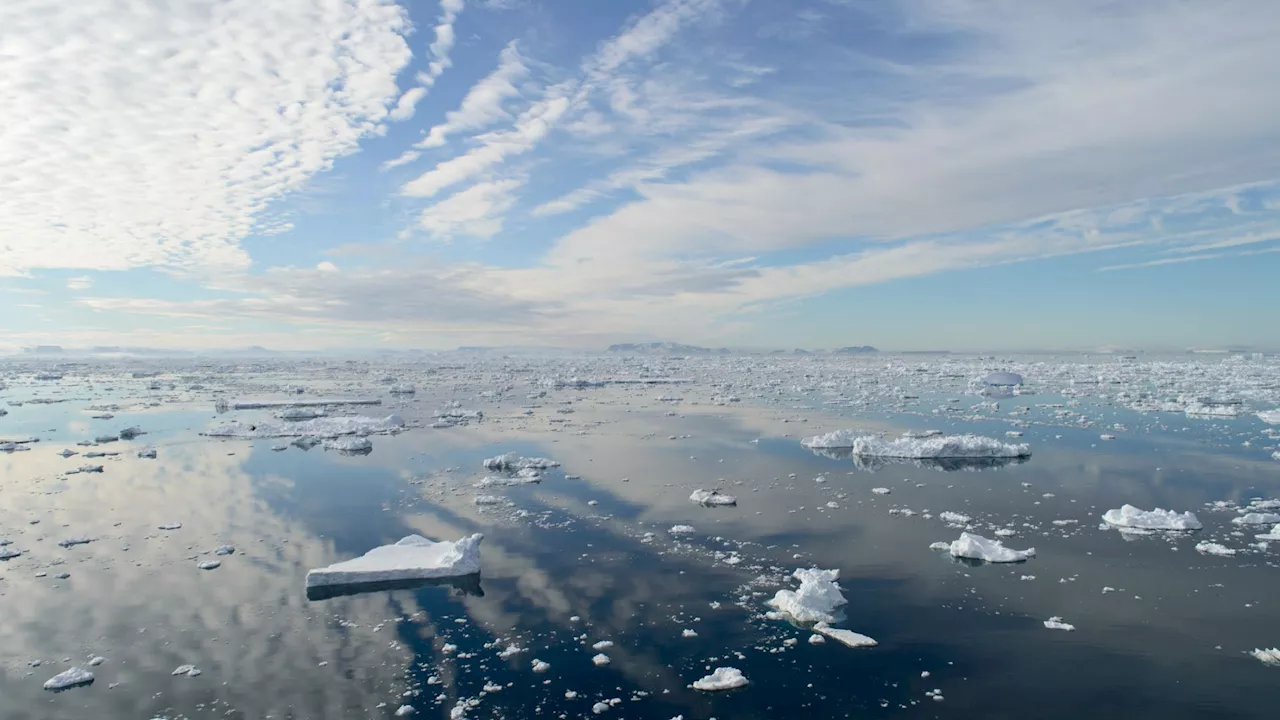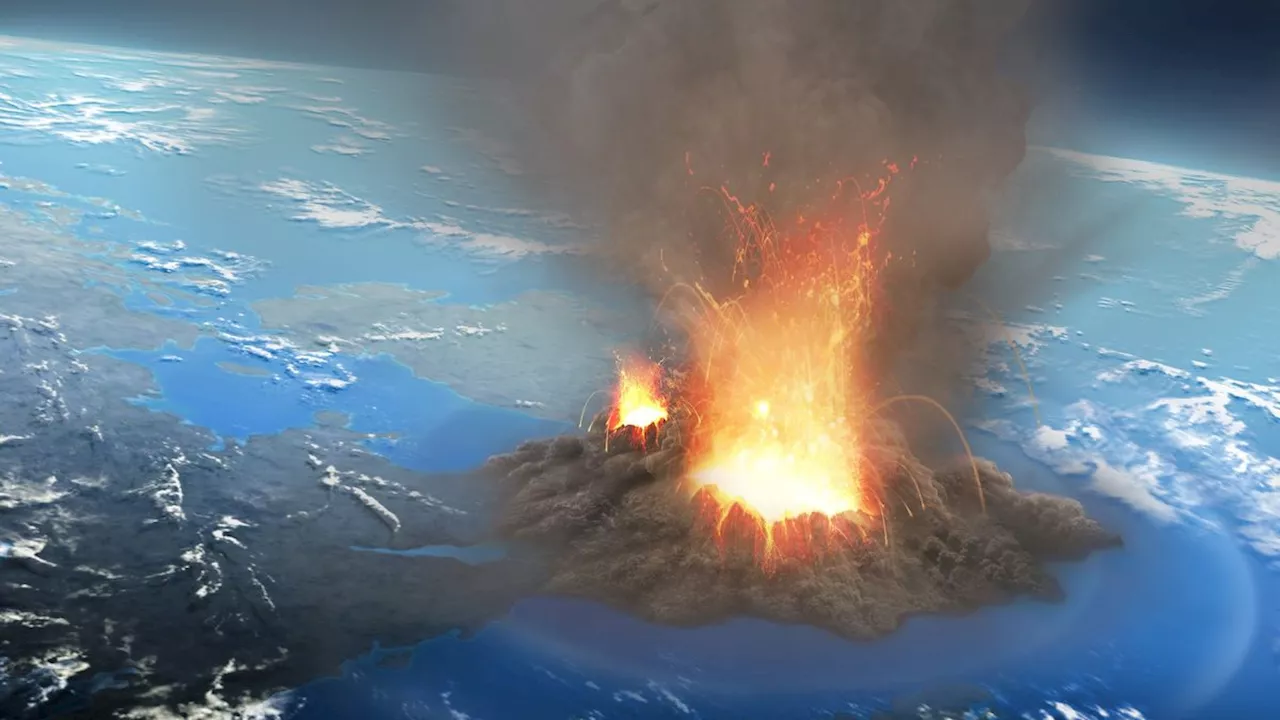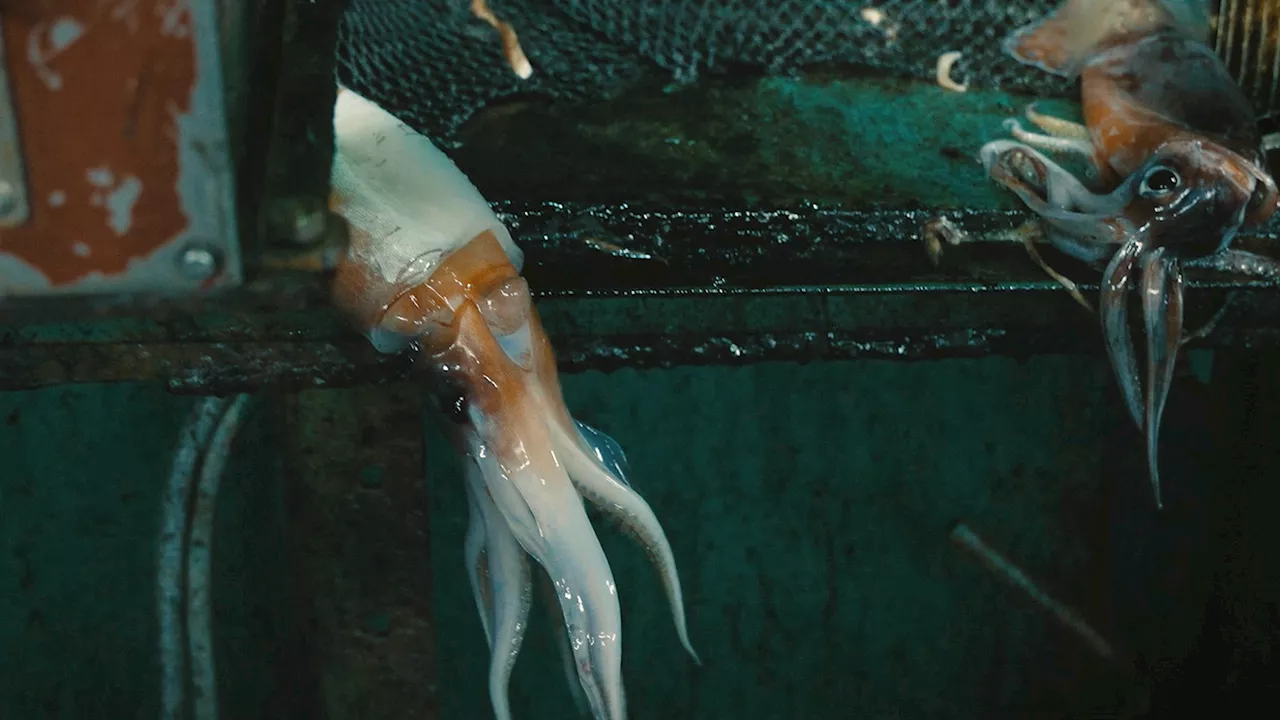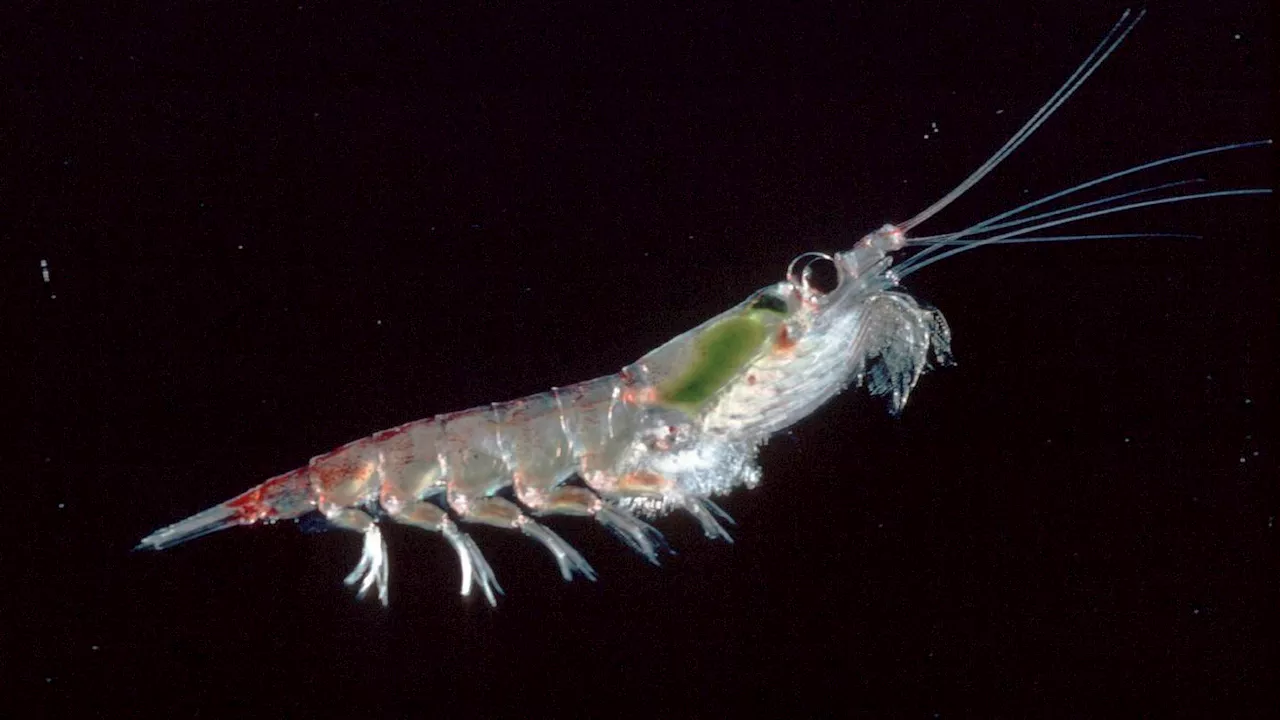Fishing for krill is banned in U.S. waters due to concerns it could impact whales, seals and other animals that feed on the shrimp-like creatures
This photo provided by the British Antarctic Survey in October 2023 shows an Antarctic krill . While krill fishing is banned in U.S. waters due to concerns it could impact whales, seals and other animals that feed on the shrimp-like creatures, it’s been taking place for decades in Antarctica, where krill are most abundant.
Surging demand for nutrient-rich krill — for feeding farm-raised fish, omega-3 pills, pet food and protein shakes — combined with advances in fishing and the still unknown impact from climate change has some scientists warning the fishery is at a critical juncture and in urgent need of stricter controls. But any further action is mired in geopolitical wrangling as Russia and China look to quickly expand the catch.
While the end of commercial whaling has allowed populations to rebound, a new study by the University of California, Santa Cruz found thatin Antarctica have been falling sharply — possibly due to a lack of krill, their main prey. Chinstrap penguins and fur seals face similar stresses.Jars of krill line the windowsills in Deborah Steinberg’s lab, their pink hue faded but their shells intact. Collected on a U.S. icebreaker, they fuel her research at the Virginia Institute of Marine Science.
The carbon cleansing starts with phytoplankton that absorb greenhouse gases burned by humans, says Emma Cavan, a biologist at Imperial College London who co-authored. Krill feed on the microscopic plants and then transport fertilizing nutrients to the ocean floor in the form of waste and their molting shells.
“CCAMLR’s mandate is conservation — it’s right there in the name,” said Claire Christian, executive director of the Antarctic and Southern Ocean Coalition, a Washington-based group that represents environmental organizations at CCAMLR proceedings. “It’s not to enable fishing.” This is the first stop on krill’s journey from remote wilderness to international commodity. From this South American hub, shipments of whole dried krill spread across the globe — to feed processors and salmon farms in Europe, Canada and Australia, pet food manufacturers in China and a former ice cream factory in Houston which produces 80% of the world’s krill oil.by volume.
Aker BioMarine’s financial wherewithal depends on another, cruder type of oil: Norway’s massive natural gas and petroleum exports.But it’s a project dear to Aker BioMarine’s billionaire founder, Kjell Inge Røkke, who got his start in fishing in Alaska in the 1990s. “It’s important to have all the options on the table,” said Trushenski, whose company does not use krill. “When I have an entire pantry to work with, there’s more flexibility.”Beyond feeding seafood, Aker BioMarine’s big push is selling krill oil capsules, which were introduced in the early 2000s, amid growing interest in omega-3 fatty acid supplements and their purported role in promoting heart, brain and joint health.
In the absence of more stringent regulation, the Association of Responsible Krill harvesting companies, whose members are responsible for 90% of the krill taken from Antarctica, adopted in 2018 a number of self-imposed restrictions.to come up with stricter rules on at-sea transfers of catch between vessels and the study of climate change on krill.
She resigned after a year, disgusted by what she viewed as the industry’s narrow focus on the buffer zones. “The marine foragers are there for the same reason the boats are: because there’s lots of krill,” said Ari Friedlaender, a University of California, Santa Cruz biologist who has spent 25 years researching whales in Antarctica. “Some level of conflict is inevitable.”
Malaysia Latest News, Malaysia Headlines
Similar News:You can also read news stories similar to this one that we have collected from other news sources.
 Stellantis picks Kokomo, Indiana, for its second US battery venture with Samsung SDIJeep maker Stellantis says it will build a second electric vehicle battery factory in Kokomo, Indiana, that will create 1,400 new jobs. The $3.2 billion joint venture factory with South Korea’s Samsung SDI is to start production early in 2027. Construction already is underway on the companies’ first joint venture factory in Kokomo, which is scheduled to open early in 2025. The city of Kokomo made a compelling case to locate the second factory there, Stellantis Chief Operating Officer for North A
Stellantis picks Kokomo, Indiana, for its second US battery venture with Samsung SDIJeep maker Stellantis says it will build a second electric vehicle battery factory in Kokomo, Indiana, that will create 1,400 new jobs. The $3.2 billion joint venture factory with South Korea’s Samsung SDI is to start production early in 2027. Construction already is underway on the companies’ first joint venture factory in Kokomo, which is scheduled to open early in 2025. The city of Kokomo made a compelling case to locate the second factory there, Stellantis Chief Operating Officer for North A
Read more »
 Over 40% of Antarctica's ice shelves reduced in volume over 25 years, scientists sayAccording to scientists, 71 of the 162 ice shelves that surround Antarctica have reduced in volume over 25 years from 1997 to 2021, with a net release of 7.5 trillion metric tons of meltwater into the oceans. The work is published in the journal Science Advances.
Over 40% of Antarctica's ice shelves reduced in volume over 25 years, scientists sayAccording to scientists, 71 of the 162 ice shelves that surround Antarctica have reduced in volume over 25 years from 1997 to 2021, with a net release of 7.5 trillion metric tons of meltwater into the oceans. The work is published in the journal Science Advances.
Read more »
 Forty percent of Antarctica’s ice shelves are shrinking, worrying scientistsIce shelves play a critical role in slowing the flow of ice on land into the ocean by essentially acting as a wall.
Forty percent of Antarctica’s ice shelves are shrinking, worrying scientistsIce shelves play a critical role in slowing the flow of ice on land into the ocean by essentially acting as a wall.
Read more »
 Over 40 percent of Antarctica ice shelves melted in 25 yearsInteresting Engineering is a cutting edge, leading community designed for all lovers of engineering, technology and science.
Over 40 percent of Antarctica ice shelves melted in 25 yearsInteresting Engineering is a cutting edge, leading community designed for all lovers of engineering, technology and science.
Read more »
 Massive New Zealand eruption 1,800 years ago flung volcanic glass 3,000 miles to AntarcticaSascha is a U.K.-based trainee staff writer at Live Science. She holds a bachelor’s degree in biology from the University of Southampton in England and a master’s degree in science communication from Imperial College London. Her work has appeared in The Guardian and the health website Zoe. Besides writing, she enjoys playing tennis, bread-making and browsing second-hand shops for hidden gems.
Massive New Zealand eruption 1,800 years ago flung volcanic glass 3,000 miles to AntarcticaSascha is a U.K.-based trainee staff writer at Live Science. She holds a bachelor’s degree in biology from the University of Southampton in England and a master’s degree in science communication from Imperial College London. Her work has appeared in The Guardian and the health website Zoe. Besides writing, she enjoys playing tennis, bread-making and browsing second-hand shops for hidden gems.
Read more »
 “Squid Fleet” Takes You Into the Opaque World of Chinese FishingIn Ed Ou and Will N. Miller's “Squid Fleet,” Ian Urbina previews the harsh conditions many fishermen face on Chinese ships.
“Squid Fleet” Takes You Into the Opaque World of Chinese FishingIn Ed Ou and Will N. Miller's “Squid Fleet,” Ian Urbina previews the harsh conditions many fishermen face on Chinese ships.
Read more »
